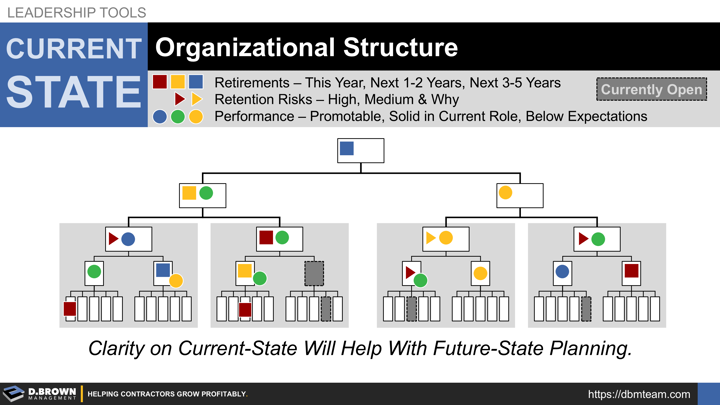This is a great exercise to go through both alone and with your team, looking at different parts of the business.
Lay out your current organizational structure with names and roles included.
- Show job roles that are currently open that you are searching for.
- Show the person who is covering for those roles currently—a person may be in more than one box, which is typical for a growing contractor.
Now the fun part begins:
- Develop some color codes and shapes similar to those shown.
- Identify the people who will likely be retiring, and in what timeframe.
- Identify the people you believe are retention risks and the reasons why. This can be for a variety of reasons, including health, family, stress levels in their current role, and/or aggressive recruitment from competitors.
- Identify performance levels, at least for all management roles.
Discussing each role and person with your leadership team will get you all aligned so you can start making plans.
Look at this in the context of your plans for the business over the next few years.
An experienced and unbiased third-party facilitator can be exceptionally valuable for the first few discussions like this. Please contact us, and we will openly share our experiences with you to see if there is an actual need and if we are the right fit.
Talent is one of the three basic constraints for every contracting business.
Going a Bit Deeper
- Look at all management roles, including your own, along with anyone you are considering for a promotion, using this 8-step checklist.
- Watch the Stratified Systems Theory (SST) / Time Span 101 videos, and then return to the discussion about each role and person.
This is the foundation you have to build upon. Your next step, when you are ready, is is to examine your 2X org structure in a similar way.
How much do you have to invest in your Talent Value Stream (TVS) to ensure that your vision is never constrained by talent?

